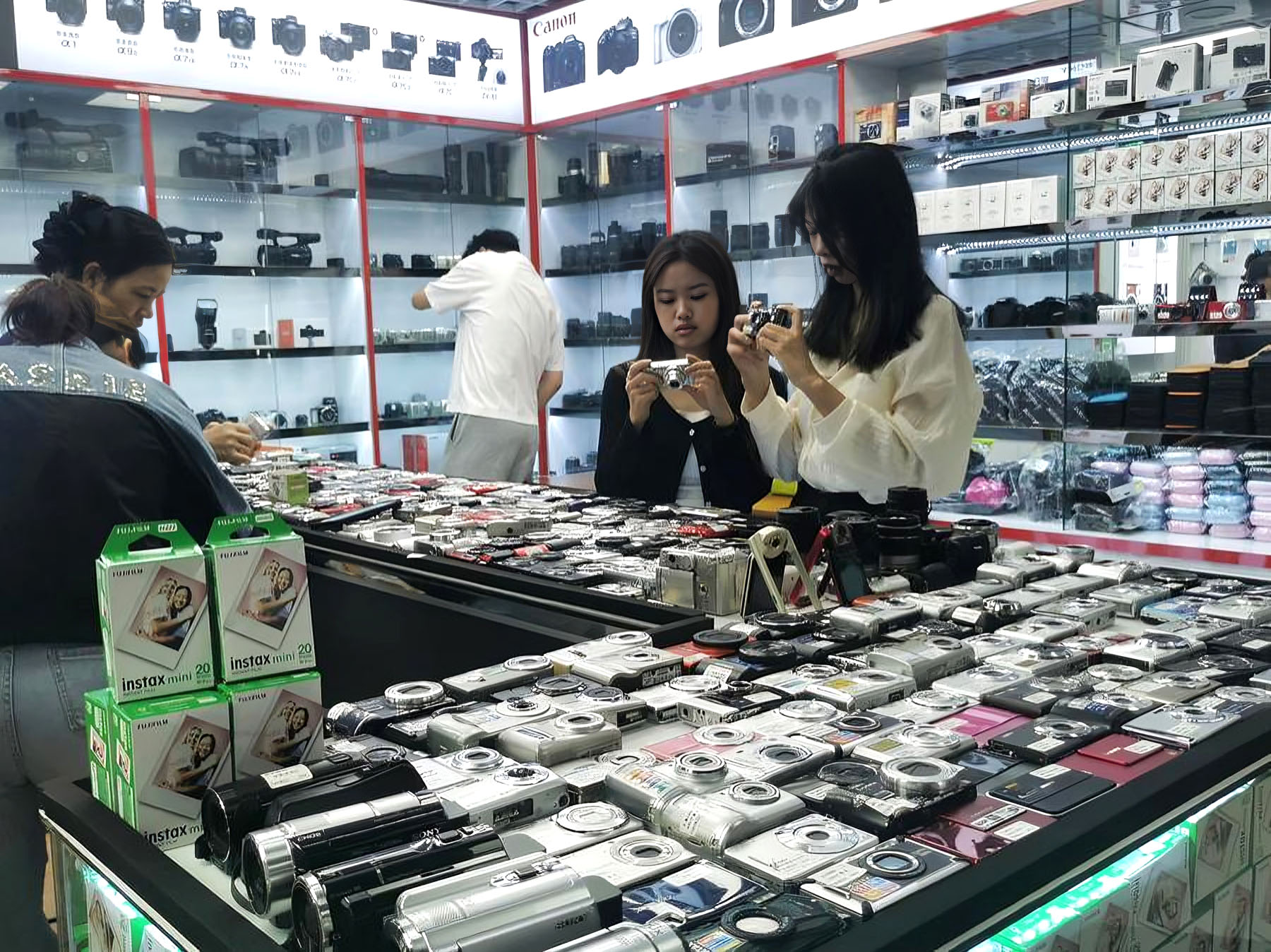
SHENZHEN — In a twist, the long-forgotten CCD digital camera, once deemed "electronic waste" and pushed aside by the technological tide, is making a comeback among young Chinese as the new darlings used for documenting their lives.
Despite their slightly blurry images and less vibrant colors, these devices, once available for a few tens of yuan, are now going for thousands. The surge in price and popularity is being fueled by the retro nostalgia trend sweeping China's youth.
"Prices have multiplied more than tenfold, and all my friends are buying them," says Tang Lili, a post-90s woman working in the southern metropolis of Shenzhen, Guangdong province.
READ MORE: Focusing on wild beauty
She sold her first camera, a Canon CCD digital she bought when she was in high school, for a pittance after graduation, by which time it had become outdated. Now, lured by the soft, bright photos she sees on social media, she's shocked to find that the price for such devices has skyrocketed beyond her wildest imagination.
On social media platforms like Xiaohongshu, Douyin and Sina Weibo, the enthusiasm for sharing secondhand, or even multiple-hand digital cameras, is growing. Owning one makes it possible to shoot images with an old-fashioned hue, the texture of film, and the coveted "cold white skin" tone.
A CCD, or a Charge-Coupled Device, is the light-sensitive component in a digital camera. While it excels in well-lit conditions, producing clear, bright images, it has limitations. Poor performance in low light, a small sensor size, and a low pixel count led to its gradual replacement by CMOS sensors after 2010.
Yet, a search for CCD cameras on e-commerce platforms like Taobao, Xianyu and Douyin reveals a wealth of vendors still selling them. Moreover, stores in the famous electronics hub of Huaqiangbei in Shenzhen, now include small yet bustling CCD stands.
Each stall, no larger than a few square meters, is a mini-museum of CCD cameras, an array of different brands and models, in a range of ages and conditions.
"Nowadays, CCD has become an aesthetic style and most people who use it do so as a result of online posts," says Zhou Xingwang, the owner of Xidi Digital, a retro CCD specialty store in Huaqiangbei. Zhou says they sell around 100 CCD cameras a month, at prices ranging from a few hundred to around 2,000 yuan ($275.3).
For youngsters, especially students, the appeal of CCD cameras lies not only in their photographic style, but also in their portability, making them ideal for everyday use. "They're small, convenient, and feel good in your hands. They also produce great shots, and there's a sense of occasion when you take them out to shoot," says Zhang Nana, a high school student in Bao'an district in Shenzhen.
With the prevalence of smartphones in recent years, major manufacturers have discontinued their compact camera lines. However, the rise of vlogging has reignited demand for portable digital cameras.
ALSO READ: Canon sees pretty picture in China mkt
An increasing number of netizens who have bought CCD cameras as a result of the fad are now discouraging others from doing so due to their technological obsolescence, saying that for the vast majority, the latest camera or smartphone is still more user-friendly for serious photography.
Insiders have warned that many low-priced cameras may be secondhand inventory from merchants of varying quality, and with outdated functions. Moreover, the retro tones and film-like feel of many CCD cameras is often the result of outdated technology and sensor aging. Misleading online promotions not only confuse consumers about CCDs, but may also lead them to purchase products that do not match their expectations.
However, others believe that retro cameras are providing the young with a new way of expressing themselves. "Sharing photos has become a social ritual. The process of sharing is not only a display of self-awareness, but also means a strengthening of group identity," says Wang Ning, professor of sociology and anthropology at the Sun Yat-sen University.
"As an aesthetic trend, the nostalgia behind the fad reflects the yearning of young people for a better life and represents the development of the time," Wang says.


